Key takeaways:
- Decentralized finance (DeFi) democratizes financial services by eliminating the need for central authorities, allowing direct control over assets through technologies like smart contracts.
- Understanding cryptocurrency can help kids grasp essential financial concepts, promoting critical thinking and creativity regarding money management.
- Engaging with online communities fosters a sense of belonging and provides valuable insights for navigating the crypto landscape.
- Important lessons include the necessity of research before investing, securing assets properly, and considering transaction costs to avoid hidden fees.
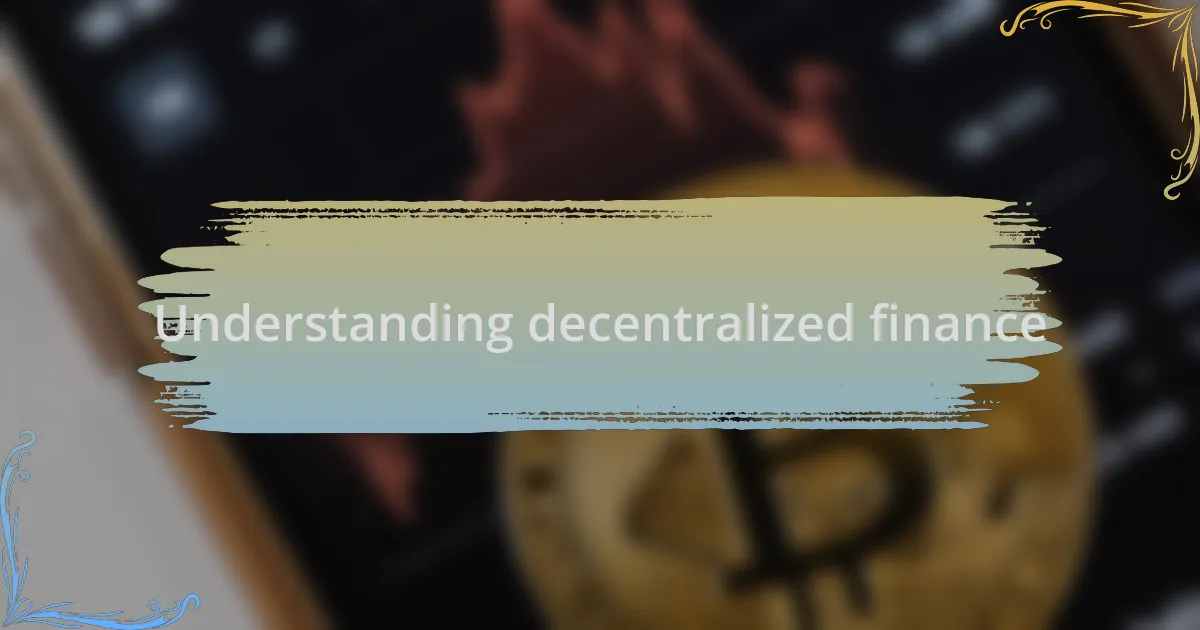
Understanding decentralized finance
Decentralized finance, often referred to as DeFi, represents a shift away from traditional banking models. I remember the first time I stumbled upon the idea of lending platforms that didn’t require a bank. It struck me as both liberating and slightly overwhelming—how could something so powerful operate without a central authority?
The beauty of DeFi lies in its ability to democratize access to financial services. I felt a sense of excitement when I realized that anyone with an internet connection could lend or borrow money without cumbersome paperwork or high fees. This concept really challenged my understanding of finance; it made me wonder: what if we didn’t need banks at all?
What I find most fascinating about DeFi is its reliance on smart contracts—self-executing agreements coded onto blockchains. When I first learned how these contracts work, I couldn’t help but feel a sense of empowerment. They eliminate the need for trust in a person or institution because the technology does it all. Doesn’t it feel exciting to be part of a financial revolution where you have control over your own assets?
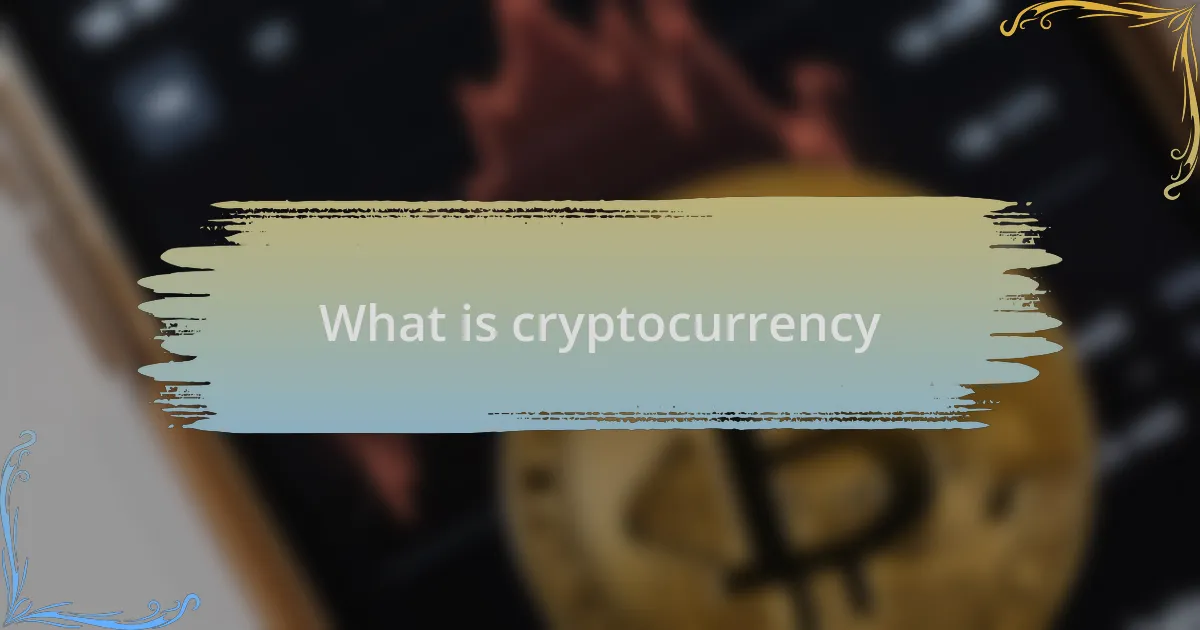
What is cryptocurrency
Cryptocurrency is a type of digital or virtual currency that uses cryptography for security. I remember the first time I stumbled upon Bitcoin; it felt like discovering a treasure hidden right in plain sight. It intrigued me that this currency wasn’t controlled by any central authority, like a traditional bank. I found myself asking: how could something so revolutionary exist in a digital space?
This form of money operates on blockchain technology, a decentralized ledger that records all transactions. When I realized that every transaction was publicly accessible and secure through complex algorithms, it was like a light bulb went off. It made me think about trust—how we usually rely on banks to handle our money, yet here was a system working without intermediaries.
What struck me the most was the community aspect surrounding cryptocurrencies. I recall joining online forums where people shared their experiences and knowledge, almost like a society built around this new form of money. The enthusiasm was contagious! Perhaps the most thought-provoking question is: could this be the future of our financial interactions? I believe it just might be.
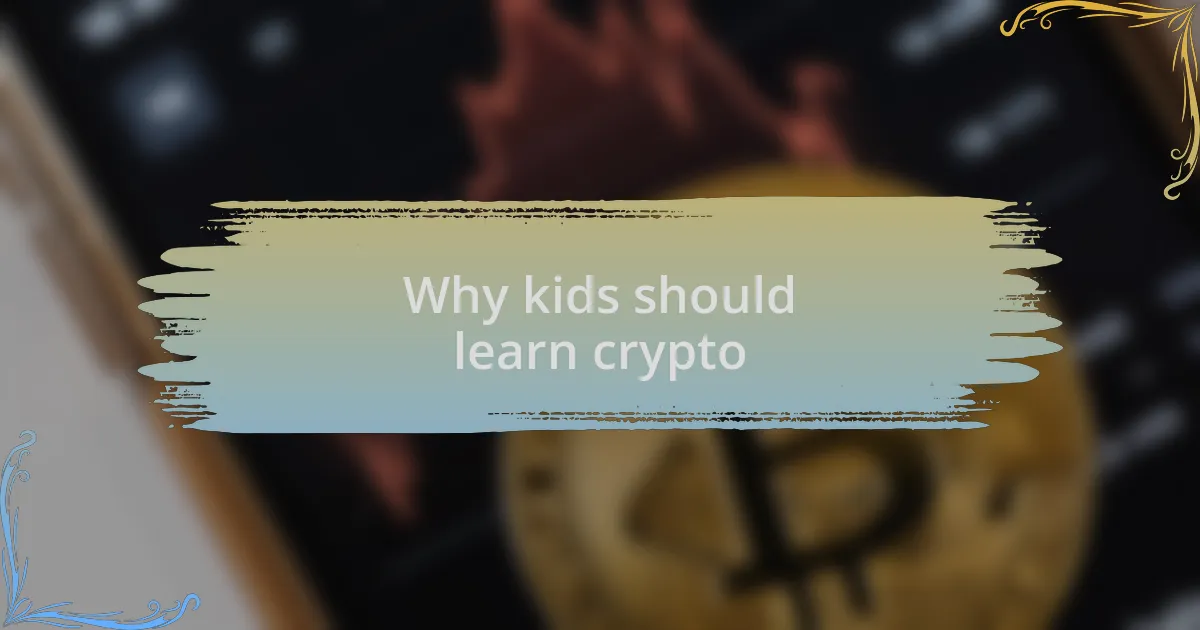
Why kids should learn crypto
Understanding cryptocurrency opens doors for kids to grasp essential financial concepts early on. I still remember explaining Bitcoin to my niece; her eyes lit up with curiosity. She asked, “Can I buy toys with it?” This simple question showed me that kids can easily connect the dots between digital currency and their everyday lives, laying a foundation for smart financial habits.
Learning about decentralized finance can also foster critical thinking skills in young minds. When my nephew first navigated a blockchain platform, he was amazed by how transparent everything was. It prompted him to think deeply about trust and security in financial transactions. What a great way for kids to engage with modern technology and develop analytical skills that will serve them throughout life!
Moreover, exploring the world of crypto encourages creativity. When I started tinkering with different cryptocurrencies, I discovered countless ways they could be used, like saving, investing, or even creating art. It’s like granting kids a canvas to paint their financial future, guiding them to formulate their own ideas and opinions about money in a rapidly changing world. Why shouldn’t we equip the next generation with the tools to thrive in this dynamic landscape?
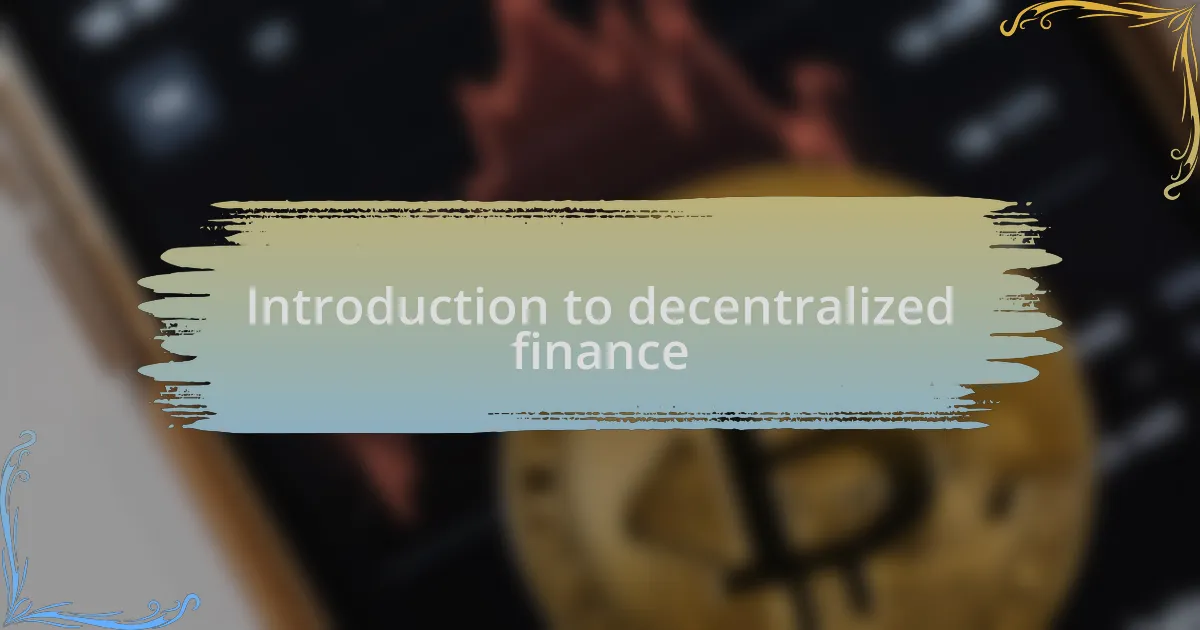
Introduction to decentralized finance
Decentralized finance, or DeFi, revolutionizes how we think about money and finance. I vividly recall the first time I heard about DeFi; it felt like discovering a secret world where banks and financial institutions were no longer in control. Just imagine what it would be like to have the ability to lend, borrow, or trade assets directly with others—free from intermediaries.
When I started exploring DeFi platforms, I felt a sense of empowerment that was exhilarating. It’s incredible to see how these technologies allow anyone with an internet connection to access financial services. I remember helping a friend navigate a lending platform, and his excitement when he realized he could earn interest on his crypto assets was infectious. Have you ever thought about how our understanding of finance changes when we can take direct control over our funds?
Diving into this realm is not just about learning new concepts; it’s about fostering a mindset of independence and innovation. I often find myself reflecting on how essential it is for kids to grasp these exciting possibilities early on. What if they could build their financial futures without relying entirely on traditional structures? That’s the promise of decentralized finance, opening doors to a world of opportunities just waiting to be explored.
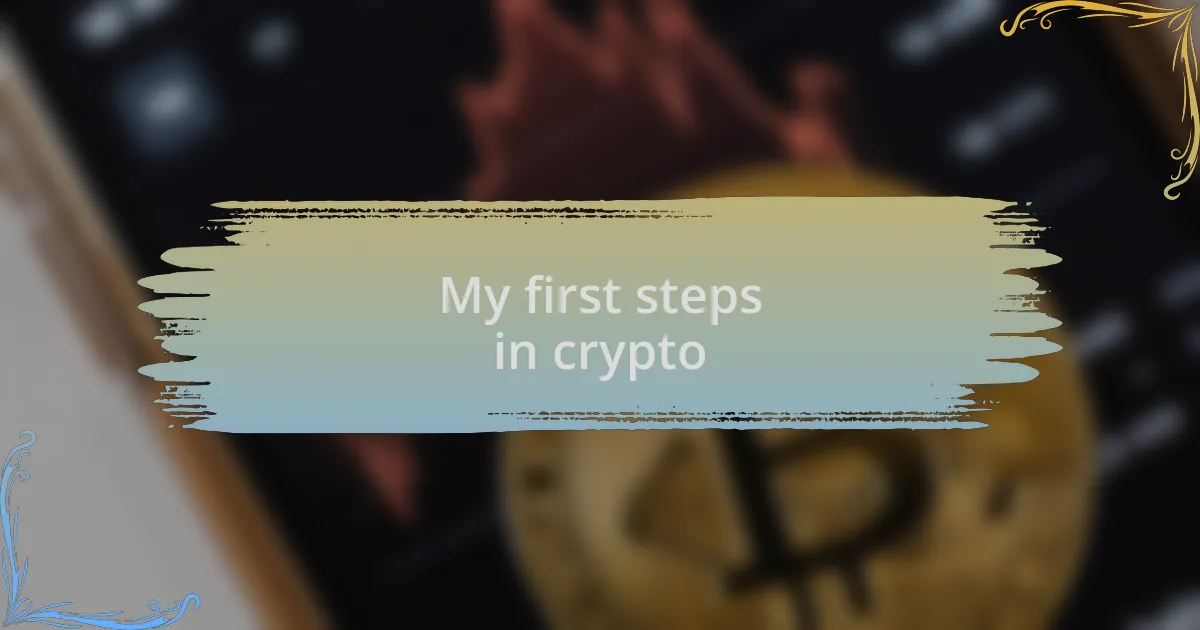
My first steps in crypto
When I took my first steps into the world of crypto, it felt like jumping into a new universe filled with endless possibilities. I remember nervously setting up my first wallet, a simple yet thrilling experience, almost like creating my own treasure chest. As I clicked “create,” I felt a mix of excitement and apprehension—what if I lost it all?
Soon after, I began trading small amounts of Bitcoin and Ethereum. I vividly recall the rush of watching price changes in real-time, almost like an adrenaline-fueled game. There were moments when I’d feel a surge of joy as my investments grew, and other times my heart would sink; that rollercoaster made me realize how closely emotions are tied to our financial choices.
Learning about crypto also led me to engage with communities online, where I connected with others sharing the same journey. I’ll never forget the first time I contributed to a group discussion—it felt empowering to exchange ideas and strategies with people around the world. Have you ever felt that sense of belonging in a new community? It made me understand that while the journey might be personal, I wasn’t alone in navigating this fascinating landscape.
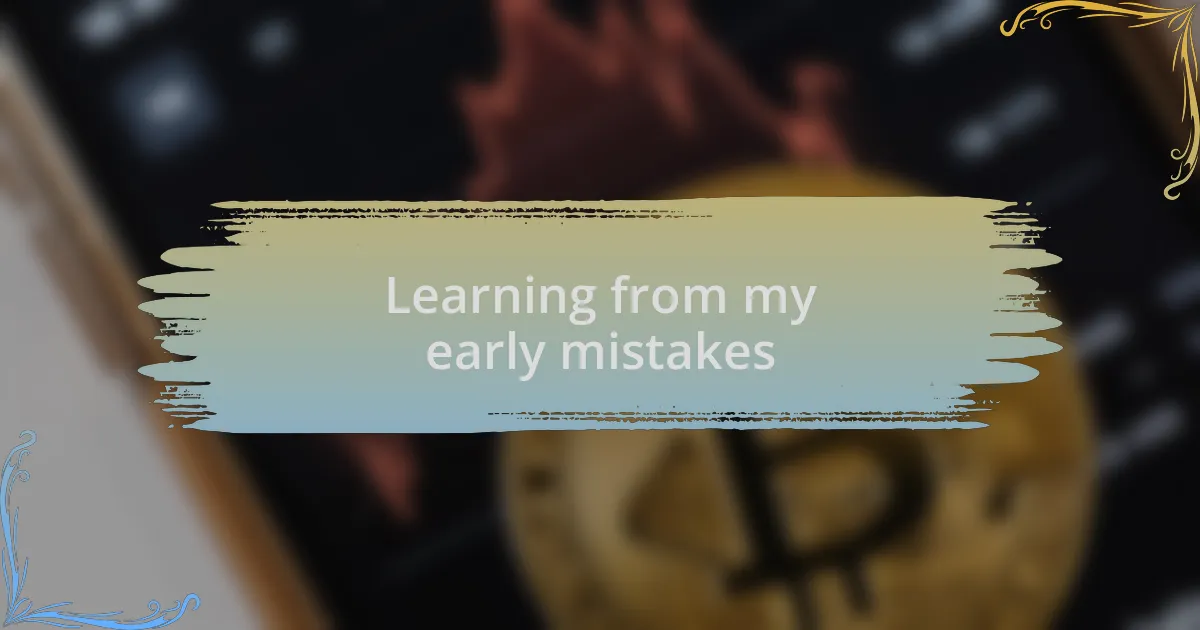
Learning from my early mistakes
It’s interesting to reflect on my early mistakes in decentralized finance. One of the biggest missteps I made was investing in a project without doing enough research. I remember feeling overwhelmed by the hype surrounding a token and jumped in, only to watch it plummet. Looking back, I realize that taking the time to read the roadmap and understand the team behind the project could have saved me from a painful loss. Have you ever been swept up in excitement and later regretted that impulsive decision?
Another lesson I learned the hard way was about securing my assets. In my enthusiasm, I neglected to set up two-factor authentication on my wallet. One day, I received a notification about a suspicious login attempt. My heart raced as I frantically tried to secure my funds. Thankfully, I caught it just in time, but the scare taught me the importance of robust security measures. When navigating the crypto space, I now ask myself, “Are my assets as secure as they should be?”
Lastly, I initially underestimated the impact of gas fees on my trades. I remember feeling a rush of accomplishment when I executed my first swap, only to realize that a significant portion went to these fees. It was frustrating to see that my profit margins were lower than expected. This experience emphasized the need to factor in all costs before making trades. Have you ever felt the sting of hidden fees? It’s a powerful reminder that the crypto world, while thrilling, also requires careful planning and consideration.
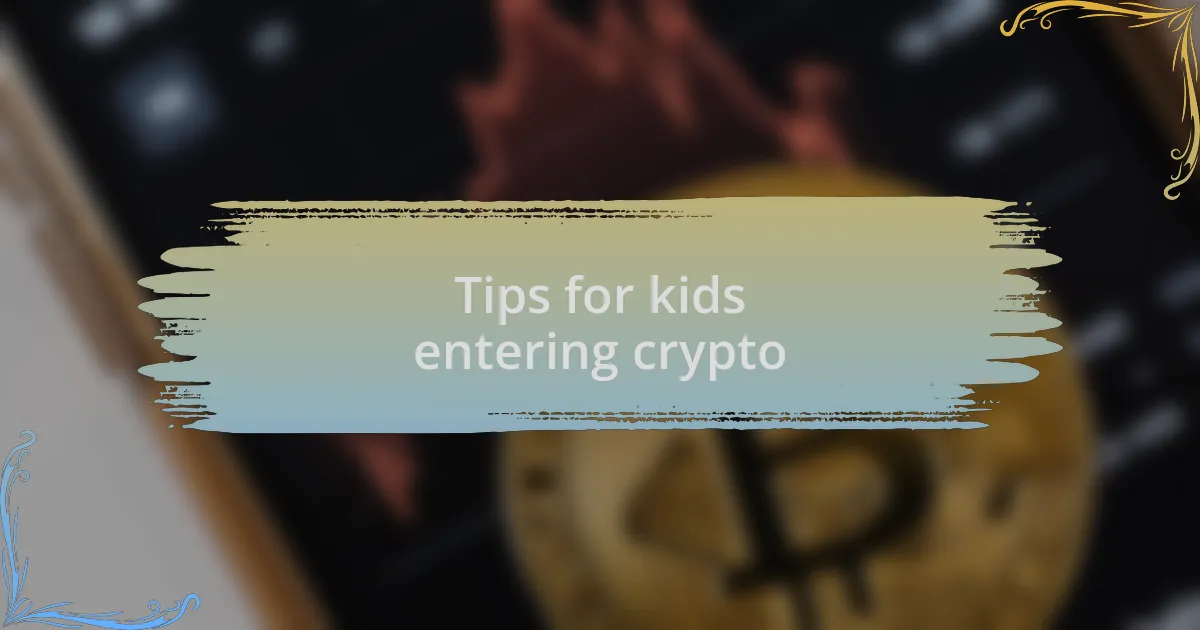
Tips for kids entering crypto
When starting out in the crypto space, I can’t stress enough the importance of safety first. I remember my excitement when I opened my first crypto wallet. I was thrilled to see my first few tokens, but I almost overlooked an incredibly vital step: writing down my recovery phrase. So, here’s a tip that saved me from sleepless nights—always keep your recovery phrase secure and never share it with anyone. Have you thought about how you would recover your assets if something goes wrong?
Another essential piece of advice I would share is to keep a journal of your trades and decisions. It might sound a bit old-school, but this habit transformed my understanding of the market. I remember getting frustrated with myself after multiple failed trades. By documenting my rationale for each decision, I identified patterns in my thinking and behavior that led to losses. This self-reflection really helped me refine my strategy. What if keeping track of your trades could help you make smarter decisions going forward?
Lastly, I found that connecting with others in the crypto community can offer a wealth of knowledge. I stumbled upon an online forum where seasoned traders shared their insights, which opened my eyes to countless strategies I hadn’t considered. Initially, I hesitated to ask questions, thinking I might seem naive, but the conversations turned out to be invaluable for my journey. So, don’t be shy! Are you ready to engage and learn from others who share your interests?